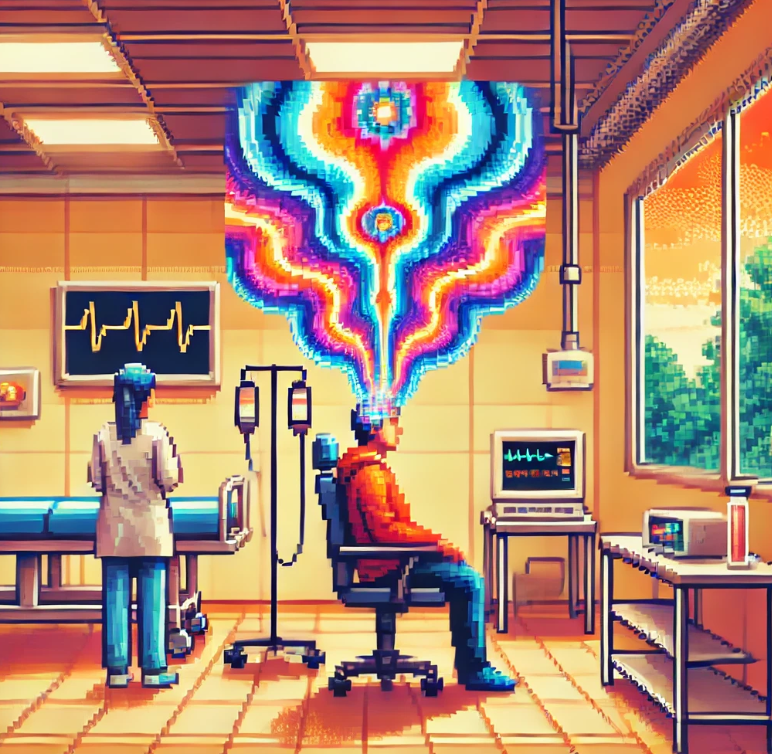
Psychedelics and Safety: What We Know So Far
Imagine sitting in a quiet room, eyes closed, heart pounding as you prepare for a journey unlike any other. You’ve volunteered for a clinical study, where scientists are investigating the therapeutic potential of classic psychedelics like psilocybin or LSD. These substances, once taboo and misunderstood, are now at the forefront of research, showing promise in treating mental health conditions that have resisted traditional methods. But, as with any medical treatment, there are risks. How safe are psychedelics in a controlled environment? What happens to the mind and body when they’re administered in high doses?
In a groundbreaking meta-analysis of over 100 studies, researchers aimed to answer these pressing questions. They explored the nature, frequency, and severity of adverse events (AEs) associated with psychedelic administration in clinical or research settings. The results? While psychedelics are generally well-tolerated, there’s more to the story. The findings highlight the need for continued caution and rigorous monitoring to truly understand their safety profiles.
A Shifting Perspective on Psychedelics
For decades, psychedelics were primarily seen through the lens of recreational use—often linked to counterculture movements and, unfortunately, urban legends of terrifying trips gone wrong. However, in recent years, scientists and therapists have revisited these substances for their potential mental health benefits. Classic psychedelics, such as psilocybin (the active ingredient in magic mushrooms), LSD, and DMT, have been hailed as breakthroughs for conditions like depression, PTSD, and anxiety.
But these substances are powerful. As with any treatment that alters brain chemistry, it’s critical to understand both the benefits and the risks.
The Science Behind the Journey
This new analysis brings a wealth of information to the table. Researchers combed through data involving over 3,500 participants across 114 studies, aiming to capture every detail about adverse events. These events ranged from serious complications—like worsening depression or psychosis—to more common, non-serious issues, such as headaches or temporary paranoia. One important takeaway was the significant distinction between those with and without preexisting neuropsychiatric conditions. While healthy participants had virtually no serious adverse events (SAEs), about 4% of participants with preexisting mental health conditions experienced some form of SAE.
Does this mean that psychedelics are dangerous? Not necessarily. Most of the reported SAEs were manageable and didn’t result in lasting harm, but they do underscore the importance of controlled environments and vigilant monitoring when administering these substances.
Why Safety Matters Now More Than Ever
The resurgence of interest in psychedelic therapy coincides with a global mental health crisis. Rates of depression, anxiety, and PTSD are rising, and traditional therapies don’t work for everyone. For those who have tried everything—medication, therapy, lifestyle changes—the prospect of psychedelic-assisted therapy can feel like a beacon of hope.
But with hope comes responsibility. This study highlights the need for improved pharmacovigilance (or drug safety monitoring) to fully understand the risks involved. While adverse events were rare, they were not nonexistent. For example, the study found isolated cases of suicidal behavior, psychosis, and seizures, especially among participants with preexisting conditions. It’s these findings that remind us of the delicate balance between potential healing and the possibility of harm.
The Good News: No Long-Term Catastrophic Events
For those concerned about the more terrifying rumors surrounding psychedelics—persistent hallucinations or irreversible psychosis—the findings bring some relief. No deaths, long-term psychotic disorders, or hallucinogen-persisting perception disorders (HPPD) were reported in the reviewed studies. This is particularly significant given the historical stigma surrounding psychedelic use, which often focused on extreme, albeit rare, negative outcomes.
Moreover, many of the adverse events recorded were temporary and resolved without lasting damage. Headaches, anxiety, nausea, and fatigue were among the most common side effects. These are similar to the side effects one might expect from a variety of medications or therapies and, in most cases, are manageable within the structured support of a clinical setting.
Why We Still Need Caution
Despite these promising results, the study also raised a red flag about underreporting. Not all studies systematically assessed adverse events, meaning that some AEs might have slipped under the radar. About 70% of the studies reported only adverse drug reactions—those events they could directly link to the psychedelics—while ignoring other potentially important occurrences.
This gap in reporting suggests that the real number of adverse events could be higher. It’s a call to action for future research: we need better systems in place to track and report these events consistently, especially as psychedelic therapy expands into new populations.
A Complex Relationship with Mental Health
One of the most intriguing findings was the disparity between healthy participants and those with preexisting mental health conditions. While healthy individuals generally fared well, those with conditions like depression or schizophrenia were more likely to experience complications. This isn’t entirely surprising—psychedelics are known to deeply influence mood and perception, which can have unpredictable results in vulnerable individuals.
Take, for example, the case of a participant with treatment-resistant depression who experienced worsening symptoms after a high dose of psilocybin. While rare, these cases serve as a reminder that psychedelics are not a one-size-fits-all solution. Their effects can vary dramatically depending on the individual, their mental state, and the context in which the drug is administered.
The Path Forward: Improved Safety and Understanding
As psychedelic research continues to expand, one thing is clear: we need more robust safety protocols. The study advocates for the use of systematic adverse event reporting, better follow-up procedures, and clearer communication of risks to participants. This is not just about minimizing harm—it’s about ensuring that everyone who chooses to participate in psychedelic therapy does so with full knowledge of the potential risks and rewards.
The therapeutic potential of psychedelics is undeniable, but it’s crucial to approach them with care. As the world of mental health treatment evolves, psychedelics could become a key tool in the fight against some of the most stubborn mental health disorders. However, that future depends on our ability to understand and manage their risks responsibly.
Join the Conversation
What are your thoughts on the role of psychedelics in mental health treatment? Do you believe the potential benefits outweigh the risks? Let us know in the comments below and share this post with others who are curious about this emerging field of therapy.
Unlock Science Secrets
Discover revolutionary research and innovative discoveries with ‘This Week in Science’! Designed for educators and science lovers, our free weekly newsletter offers insights that can transform your approach to science. Sign up now and deepen your understanding and passion for science. If you liked this blog, please share it! Your referrals help This Week in Science reach new readers.



